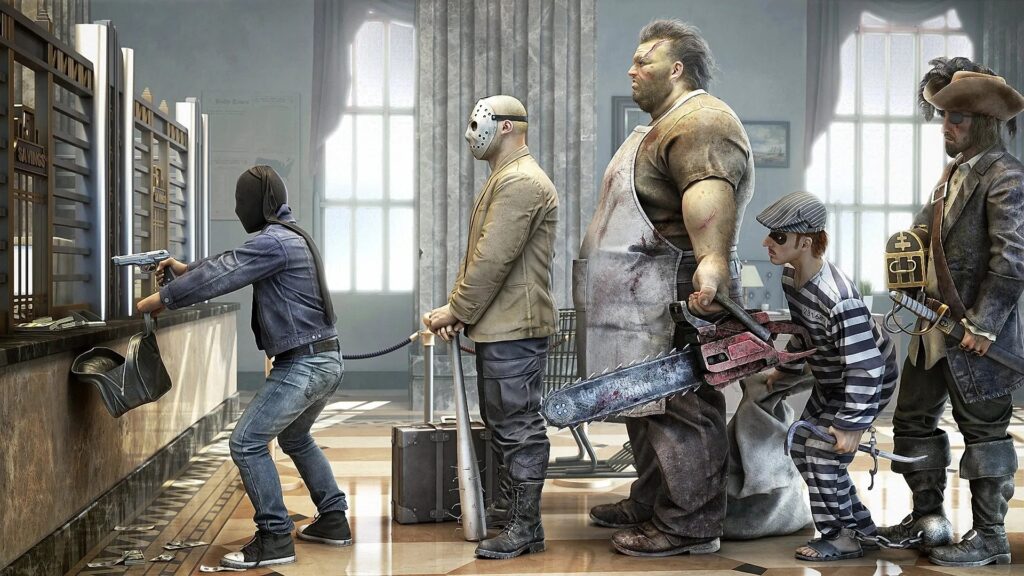Gregory McKnight was convicted of killing several people, among other various crimes like robbery and kidnapping, and is currently on death row at the Chillicothe Correctional Institute. His story might not have garnered much national attention, but that doesn’t necessarily mean that his story can’t teach us a thing or two.
There is no doubt that the American justice system isn’t perfect. None are, really. And McKnight’s story illustrates that perfectly.
A large part of the stuff I’ve read about McKnight revolves around one fact: McKnight was released from prison and then went on to kill a few more people. Technically, that’s true. There’s just a lot more to the story than that.
1992 – The First Murder
In 1992, Gregory McKnight was arrested. During a robbery attempt, he shot and killed his victim. It didn’t take the police long to tie McKnight to the crime. He was quickly arrested and before long was standing before a judge.
Gregory McKnight was 15 years old.
The judge sentenced him to the Circleville Youth Center, where he remained incarcerated until 1997. He was now a 20-year-old free man.
One of the reasons the justice system will never be perfect is the debate over how it handles juveniles. To many people, that five-year sentence does not seem like an adequate punishment for a robbery where the target was shot and killed. On the other hand, he was still in many ways just a kid who made a mistake. He wasn’t even old enough to legally drive a car yet.
Another problem with the justice system comes in the debate over its very nature. The system is set up to punish criminals, even juveniles, and get them off the street where they can’t do any more crimes, at least while they’re incarcerated. This should be (but is it really?) a deterrent against committing further crimes.
On the other hand, there are those who believe that one of the main focuses of the justice system (especially for juveniles) should be rehabilitation (along with punishment). On this side of the debate, the system should focus on making criminals become productive members of society, and of course not the kind of person who commits crimes.
While we’re at it, we can also ask ourselves if younger offenders should be treated as adults, or as children – and what that should mean.
Many people believe that anybody’s eighteenth birthday is a magical day – legally speaking it’s when children become adults. As children, we’re supposed to learn how to live our lives, and we’re going to make mistakes. Should all those mistakes follow us into adulthood? Maybe. Maybe not. Or should the proverbial slate be wiped clean at that point? Or are there some crimes so horrific or offensive that they should follow children around forever?
After Release
Shortly after being released from the juvenile correctional facility, Gregory McKnight got married. Young men and ladies do that from time to time – but there was one aspect of this that deserves further scrutiny.
The couple had met at the Circleville Youth Center. Gregory was an inmate. Katherine worked there as a corrections officer.
I suppose there’s no law saying they couldn’t get married and if two people are in love, that’s all that should matter. But … still …?
Records also indicate that around the time of McKnight’s release from the Youth Center, Katherine was on suspension from the center while they investigated claims that she had been having inappropriate “relationships” with the inmates. Before long, the investigation concluded, and Katherine was left without a job.
None of the public information that I have located named any of the inmates she may have been involved with, nor how many. There was no way of knowing whether her relationship with McKnight was a part of that investigation or not. Nor do we know if any other inmates were included as well. To be fair, there is some evidence that McKnight and Katherine had a relationship after his release, but all things considered it may have started before.
2000 – Kidnapping and Murders
After his release from the Youth Center, Gregory McKnight didn’t stay out of trouble. He’d soon be facing a few misdemeanor charges, like burglary. That would all change in 2000.
In May, 2000, a 20-year-old young man named Gregory Julious would disappear. As Julious was a known acquaintance of McKnight (and considering everything they knew about him) he was considered a prime suspect.
A few months later, he and a couple of his friends broke into someone’s house and stole a small cache of firearms. Once again, McKnight was someone the police were looking at.
That would all change in November that year when a young lady he worked with at a restaurant disappeared. Her name was Emily Murray.
I do not want to give the impression that the police were incompetent. From what I can see, they were doing their job. Sometimes, things seem obvious after the fact, once more is known. Yes, the police knew that McKnight knew both missing people, and he had spent years in what was essentially a juvenile prison for murder. His adult robbery crimes were public record. Yet, they had little concrete evidence that would tie McKnight to either the Murray or Julious disappearances.
That would all change when police went to the McKnight address and discovered an unknown car in the driveway. A quick run of the plates informed the officers that the car belonged to Emily Murray, still officially a missing person.
Both Gregory and Katherine McKnight were arrested and charged with receiving stolen property, as, legally speaking, the Murray car was found in their possession. A search of their property began, so it was most likely going to be just a matter of time before further charges were filed.
Almost immediately, the Murray’s body was discovered rolled up in some carpet. Detectives also found other human bones belonging to another individual. The following day, Murray was officially identified. A murder indictment was soon to follow. About a month later, further charges would be filed once those additional bones were identified as belonging to Julious.
July 2002 – Katherine and Preparation for Trial
One of the questions that as far as I am aware has yet to be answered involved whether Katherine participated in any way in the abductions and murders, or did she know nothing about them?
Katherine told investigators that she had never met neither Murray nor Julious, nor had she even heard their names before their bodies were discovered on her (and Greg’s) property. She also told investigators that she and Greg had only spent one night there, as they had been living with her sister across the street until the trailer could be fixed up.
Katherine seemed to have a semi-plausible explanation for everything – too plausible, according to some. What mattered at the time, however, was what the investigators and the prosecutors could prove. And, without any direct evidence in Katherine’s involvement, the charges against her were dropped.
The death penalty has always been a controversial topic (and we should probably debate its merits another day). What we can say, though, is that in 2002, the judge presiding over this case, told prosecutors they could not seek the death penalty. Why? Vinton county, where the crimes occurred and the trial would soon begin, was the least populous in the state. The county had a limited budget, and paying for not just the prosecution, but also for the public defender representing McKnight would deplete the county’s already limited resources.
This decision would irritate pretty much everyone. Many people echoed the Murray family’s sentiment that any amount would be “a small price for justice”.
For McKnight and his public defender – this somehow meant that he would not get a fair trial. They argued that because all potential jurors in this case had most likely heard this news, they were tainted to the point where it could have an effect the outcome of the trial. The judge ruled against them.
Yet, the judge also, eventually, changed his mind, ruling that the death penalty could be sought for the Murray killing, but not the Julious. While the evidence between the two crimes were mostly the same, there was a little bit more direct evidence in the Murray case.
And this is how it went to trial.
Verdicts and Aftermath
After the trial, the jury deliberated for less than an hour before returning a guilty verdict on all counts:
Aggregated Robbery (Murray)
Murder (Julious)
Kidnapping (Murray)
Aggregated Murder (Murray)
Recieving Stolen Property
Complacency Burglary
His sentence: Death for Aggregated Murder; Life without Parole for Murder; ten years for kidnapping; eight years for complicity burglary; and 1.5 years for receiving stolen property.
In 2005, McKnight’s attorney Rob Lowe (not THAT one) argued that the trial was unfair because of racial bias. The details of both the Julious case and Murray’s was nearly identical, as was the amount and type of evidence the prosecutors relied upon. Therefore, it hardly seemed fair that they seek the death penalty for Murray, a white female, but not for Julious, a black male.
A review of the trial revealed that while the two cases were largely similar, there was a bit more evidence directly tying McKnight to the Murray kidnapping and murder than that of Julious. For the prosecution, it was what they felt comfortable they could prove beyond any and all doubt. Eight months later, the issue wound its way through the courts to the Ohio State Supreme Court who decided 6 to 1 to uphold the conviction.
McKnight would try this something similar again, raising the issue by saying that he had overheard some of the jurors in the case using racial slurs. Perhaps if he had mentioned this at some point in hte fifteen years between the trial and making this claim, someone would have taken it a bit more serious.
2015 – A Twist Ending?
In 2015, McKnight wrote two letters to the district courts asking for his appeal to be voided, saying that none of his current defenders still speak for him. He, thorough said lawyers, had so far been doing everything they could to overturn his conviction. But now, he states, he’s ready to accept his execution. In fact, he seems to think that he wants to die. He claims to have accepted what he’s done and concluded that the only way to freedom is “death”.
The Murray family, who was initially upset over the judge’s decision to not allow the death penalty, now stands firmly against this motion. The local papers quote them by saying that their daughter wouldn’t have wanted anyone to die on her behalf, but I also wonder if they believe that executing McKnight would end his suffering.
Currently, McKnight is still in prison and awaiting his execution.



